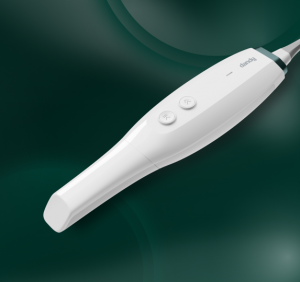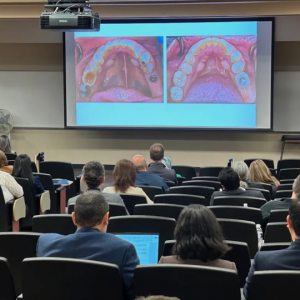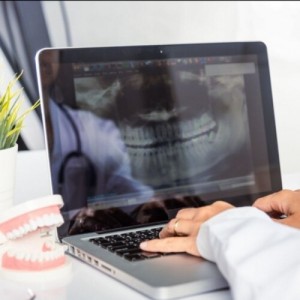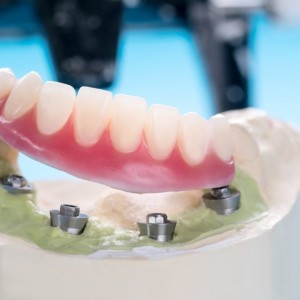
Zirconia VS Lithium disilicate
Simona Chirico
With the development of CAD/CAM system, nowadays the most used materials in the prosthetic fields are: zirconia and lithium disilicate. In particular, in a review published in 2015, monolithic zirconia was reported as the most prescribed material for posterior single crowns and lithium disilicate for the anterior single crowns.
If we want to compare these two materials, which is the best one?
In a study published in the Journal of Prosthetic Dentistry in July 2018, Kwon et al. compare the flexural strength, translucency parameters, early and long-term of lithium disilicate with zirconia with 5 mol% yttria (5Y-ZP) and zirconia with 3 mol% yttria (3Y-TZP).
MATERIALS AND METHODS
The 5Y-ZP material selected for this study was Katana UTML shade A1 (Kuraray Noritake Dental). As it is a multilayer shaded material, the bottom (cervical) surface of the disk was selected for the bonded surface of the bond strength specimen, and the top (occlusal) surface of the disk was selected to receive all other experimental conditions. The reference 3Y-TZP material selected was Katana HT shade HT10. The reference lithium disilicate material selected was e.max CAD LT shade A1 (Ivoclar Vivadent AG). For the translucency parameter, e.max CAD HT shade A1 was also included. Flexural strength bars were sectioned (n=10, 25×4×2 mm), sintered or crystallized, polished, and fractured at 1 mm/ min. Translucency specimens (1 mm thick) were fabricated (n=10). Their L*a*b* values were measured against a black-and-white background with a spectrophotometer, and DE00 was calculated. Zirconia bond strength specimens were airborne-particle abraded with 50 mm alumina followed by the application of a 10-methacryloxydecyl dihydrogen phosphateecontaining primer (Clearfil Ceramic Primer). Lithium disilicate bond strength specimens were etched with 5% hydrofluoric acid followed by application of a silane-containing primer (Clearfil Ceramic Primer). A Tygon tube filled with resin cement (Panavia SA) was fixed to the surface of the ceramics and light-polymerized. After 1 day or 150 days of water storage, the resin cement was debonded in a macroshear test (n=10). The cusps of extracted human molars were isolated and mounted into the University of Alabama at Birmingham wear-testing device. Wear testing was performed with a 20-N load for 300 000 cycles in 33% glycerin. The volumetric wear of polished zirconia, lithium disilicate, and enamel were measured along with the wear of the opposing enamel cusps using a noncontact profilometer (n=8). The data were compared by ANOVA and Tukey-Kramer analysis (a=.05).
RESULTS
- flexural strength: Katana HT (1194 ±111 MPa) > Katana UTML (688 ±159 MPa) > IPS e.max CAD LT (460 ±53 MPa) (p < 0.01).
- translucency parameters: IPS e.max CAD HT (12.64 ±0.48) > IPS e.max CAD LT (9.28 ±0.36) > Katana UTML (8.30 ±0.24) > Katana UTML (8.30 ±0.24) (p < 0.01)
- bond strength to: Katana HT was 34.22 ±5.14 MPa (1 day) and 28.37 ±6.03 MPa (150 days), Katana UTML was 35.04 ±5.69 MPa (1 day) and 25.03 ±6.44 MPa (150 days), and e.max CAD LT was 35.50 ±3.45 MPa (1 day) and 22.32 ±3.45 MPa (150 days).
- materials wear: No measurable wear could be detected on the zirconia materials. Instead, E.max CAD LT wear (0.28 ±0.13 mm3) was significantly greater than the wear of flat labial enamel (0.09 ±0.03 mm3) (p < 0.01).
- wear to opposing enamel cusps: the volumetric wear measured on enamel cusps opposing Katana HT was 0.24 ±0.19 mm3, Katana UTML was 0.23 ±0.09 mm3, emax.CAD LT was 0.31 ±0.10 mm3, and natural labial enamel was 0.31 ±0.14 mm3.
CONCLUSIONS
All of these materials are a good choice for prosthetic rehabilitations. Therefore, the choice between these materials depends on the mechanical, functional, parafuncional and aesthetical characteristics of the patient.
(Photo credit: Dr. Cesare Robello)
For additional informations:
Comparison of the mechanical properties of translucent zirconia and lithium disilicate Comparison of the mechanical properties of translucent zirconia and lithium disilicate
 Related articles
Related articles
Digital Dentistry 04 November 2025
Digitalisation is an expanding field in dentistry and implementation of digital teaching methods in dental education is an essential part of modern education.
News 03 November 2025
Dandy, a fully digital dental lab, today unveiled two new products for digital dentistry: the revolutionary Dandy Vision intraoral scanner and the powerful.
Editorials 02 October 2025
U-M School of Dentistry hosts national symposium on digital dentistry education
The University of Michigan School of Dentistry hosted a national Digital Dentistry Educators Symposium last week that drew faculty and leaders from 35 dental schools around the country.
Digital Dentistry 29 August 2025
Digital dentistry: The new state of the art — Is it disruptive or destructive?
Summarizing the new state of the art of digital dentistry, opens exploration of the type and extent of innovations and technological advances that have impacted – and improved – dentistry.
Endodontics 15 August 2025
Feasibility of Implementing Digital Dentistry Section in Dental Clinic of a Military Centre
Digital dentistry is not the wave of the future, it is happening now. Whether a dentist embraces the new technology determines the quality of treatment and possibly his future; for this reason,...
 Read more
Read more
Prosthodontics 17 November 2025
The purpose of this report is to describe a new technique to fabricate and deliver an implant-supported fixed prosthesis to the patient on the day of surgery, and to propose a protocol for the...
Editorials 17 November 2025
The Langkamp Allison Award recognizes a Pitt Dental Medicine third-year dental student interested in pursuing a career in dental education.
Products 17 November 2025
VELMENI today unveiled VELMENI Voice, an AI-driven voice recognition tool designed to transform periodontal charting and clinical documentation.
News 17 November 2025
Angelalign Technology Inc. (6699.HK) (“Angel”) recently announced the expansion of its flexible iOrtho platform to include direct integration with the Dexis, Shining 3D, and Panda scanners.
News 17 November 2025
Following the first FDA clearance for technology that measures internal mobility in teeth, Perimetrics CEO and Chairman Robert Hayman is once again leading dentistry into a new era with InnerView, a...














